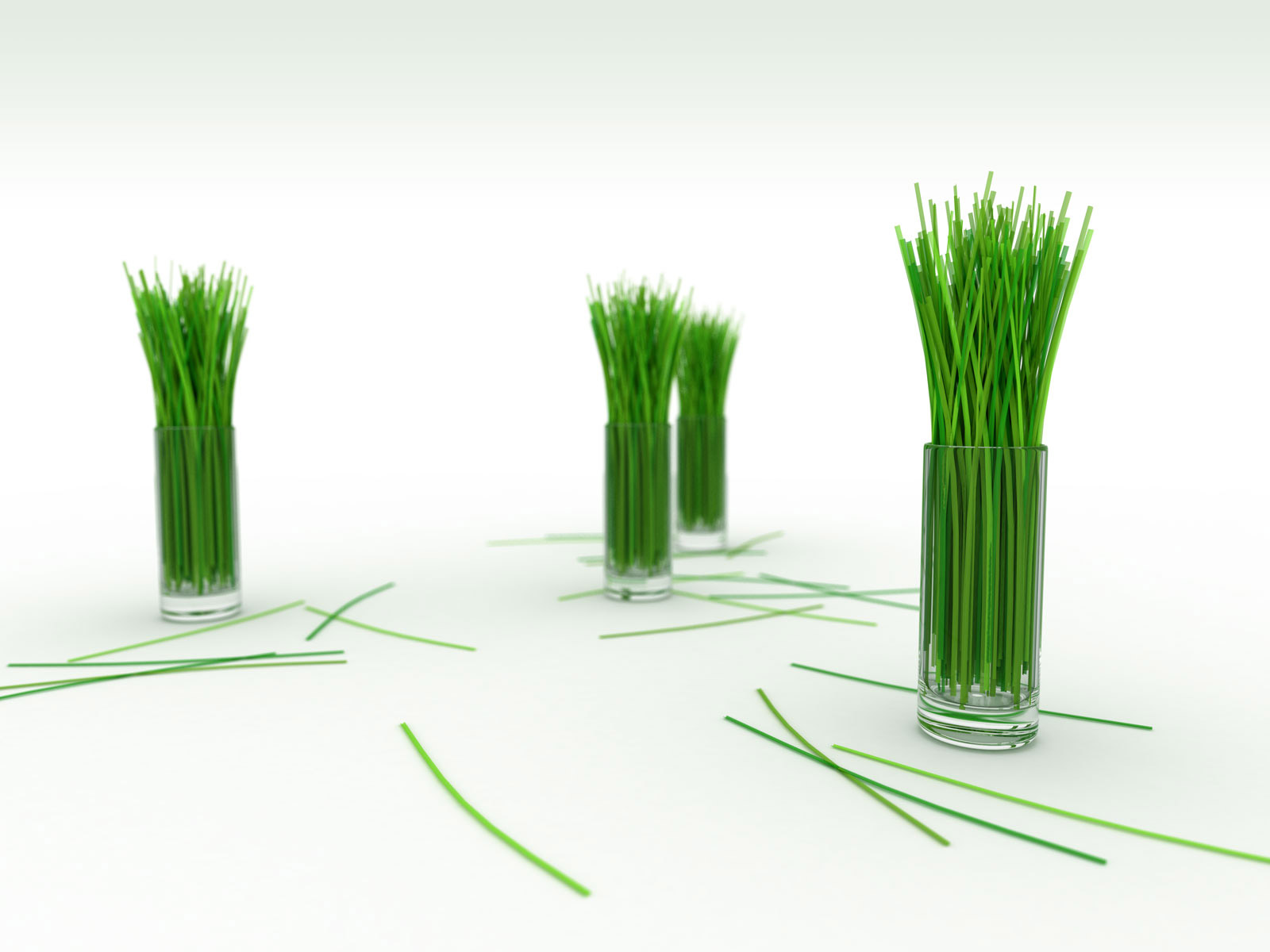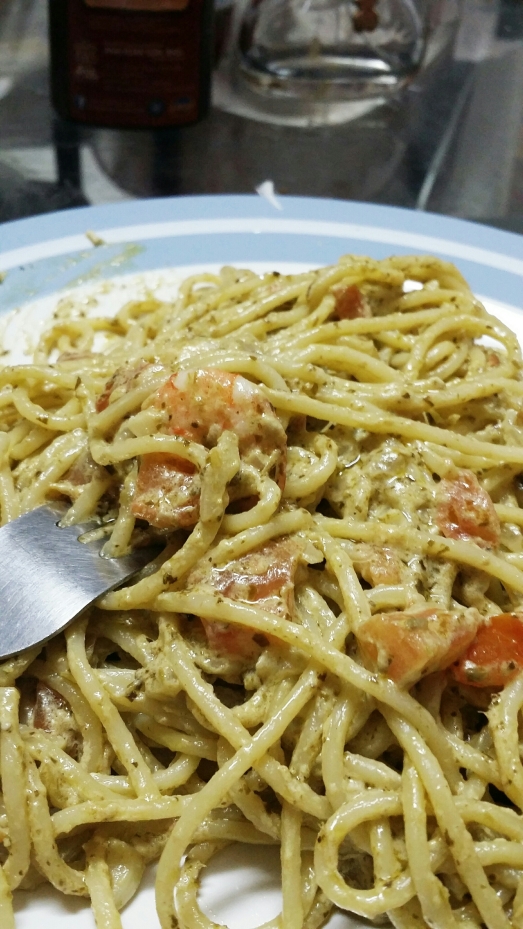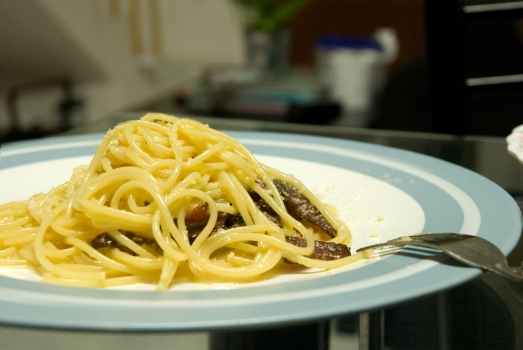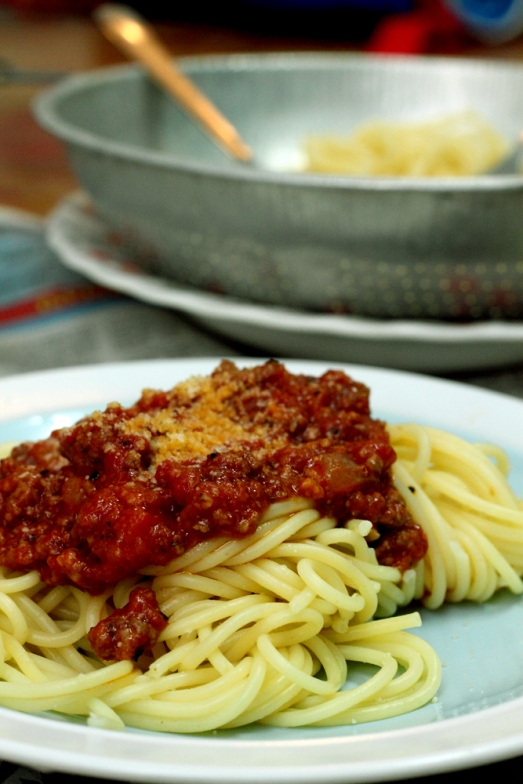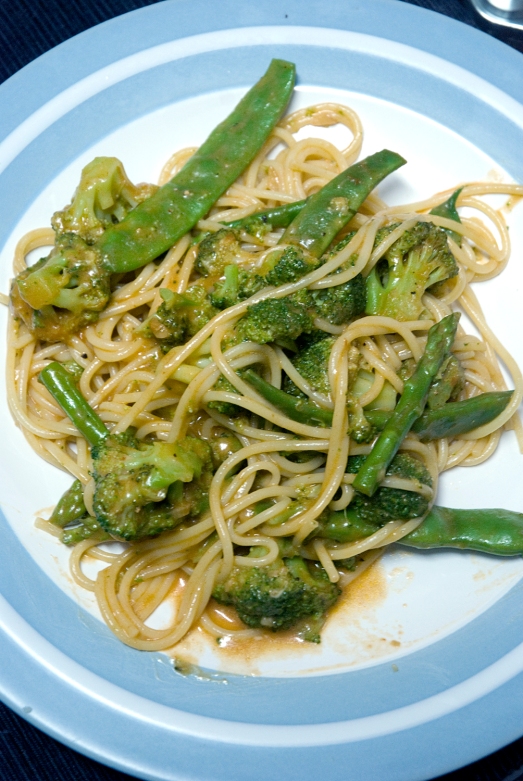
This Italian phrase, primavera [pree-muh-VEHR-uh] means “spring style” and refers to the use of fresh vegetables (raw or blanched) as a garnish to various dishes. The origin of the dish is traced back to New York, where the chefs at Le Cirque restaurant came up with a riot of vegetation doused in butter, cream and lots of parmesan cheese. This version is a lightened and simplified rendition of this classic, but still captures the spirit of the 70’s and 80’s high style dining fashion. The dish may contain almost any kind of vegetable, but firm and crisp vegetables, such as broccoli, carrots, peas, onions, and green bell peppers with tomatoes are the usual preference. Classic primavera sauce is based on a soffrito (the sweating of vegetables in low heat without browning) of garlic and olive oil and finished with Parmesan cheese. Further versions, such as this one is based on a heavier cream or Alfredo style sauce.
Serves 4
1/2 pound spaghetti
a small bunch broccoli, about 1 heaping cup of florets
1 small zucchini, diced
4 asparagus’ spears
1/2 cup snow peas/honey beans
3 minced garlic cloves
2 tablespoons tomato paste
a bunch of basil leaves, chopped
4 tablespoons butter
1/4 cup chicken/vegetable broth
1/2 cup heavy cream
a handful of freshly grated parmesan cheese
Salt and freshly ground black pepper
Cook the pasta to al dente. Bring a large pot of water to boil and salt it well. It should taste like the sea. In the meantime, fill a large bowl with ice water to prepare the waterbath. Boil the broccoli for 1 minute. Add the asparagus and boil another minute. Add the snow peas/honey beans and boil for 30 more seconds. Remove all the vegetables and plunge them into the ice water. Once they’re cool, drain in a colander.
If you want, you can boil your pasta in the same pot you boiled the vegetables in, or you can start over and boil new water. In a large saute pan, heat the butter over medium-high heat. When the butter melts, add the garlic and zucchini and cook for a minute. Add the tomato paste and cook for another 2 minutes. Pour in the chicken/vegetable broth and turn the heat to high to bring it to a boil. Add the cream and toss in all the vegetables you boiled. Stir to combine. Turn the heat down until the cream-chicken broth mixture is just simmering, then add the parmesan cheese and stir again to combine. If the sauce seems too thick add some more of the broth.
As soon as the pasta is done, drain and transfer it into the sauce and stir to combine. Add the basil and season to taste. Serve immediately.
